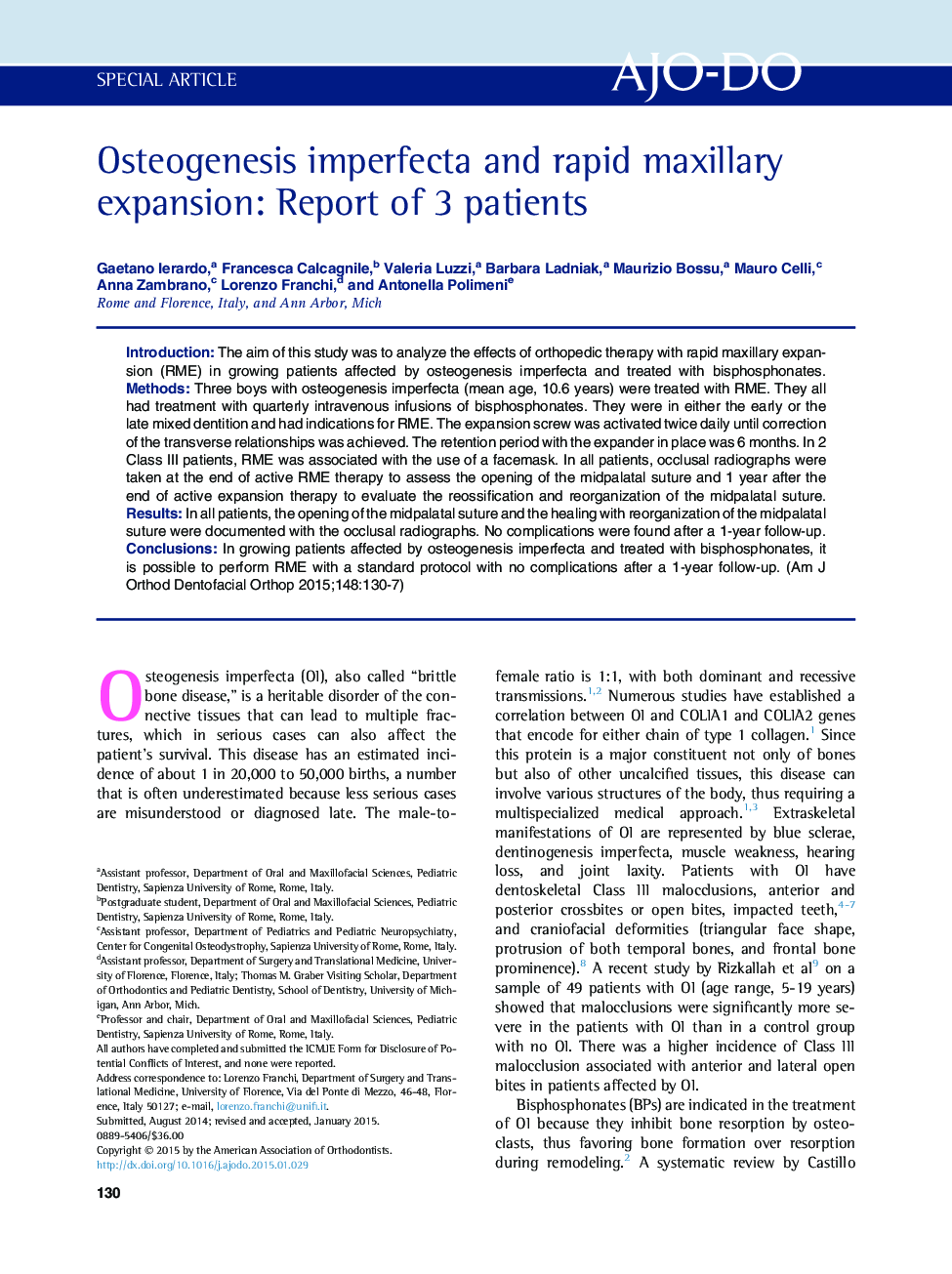| Article ID | Journal | Published Year | Pages | File Type |
|---|---|---|---|---|
| 3115343 | American Journal of Orthodontics and Dentofacial Orthopedics | 2015 | 8 Pages |
•Three growing boys with osteogenesis imperfecta were taking bisphosphonates.•Their orthodontic treatment included rapid maxillary expansion (RME).•Opening and healing of the midpalatal suture were documented.•No complications associated with RME were found after a 1-year follow-up.
IntroductionThe aim of this study was to analyze the effects of orthopedic therapy with rapid maxillary expansion (RME) in growing patients affected by osteogenesis imperfecta and treated with bisphosphonates.MethodsThree boys with osteogenesis imperfecta (mean age, 10.6 years) were treated with RME. They all had treatment with quarterly intravenous infusions of bisphosphonates. They were in either the early or the late mixed dentition and had indications for RME. The expansion screw was activated twice daily until correction of the transverse relationships was achieved. The retention period with the expander in place was 6 months. In 2 Class III patients, RME was associated with the use of a facemask. In all patients, occlusal radiographs were taken at the end of active RME therapy to assess the opening of the midpalatal suture and 1 year after the end of active expansion therapy to evaluate the reossification and reorganization of the midpalatal suture.ResultsIn all patients, the opening of the midpalatal suture and the healing with reorganization of the midpalatal suture were documented with the occlusal radiographs. No complications were found after a 1-year follow-up.ConclusionsIn growing patients affected by osteogenesis imperfecta and treated with bisphosphonates, it is possible to perform RME with a standard protocol with no complications after a 1-year follow-up.
